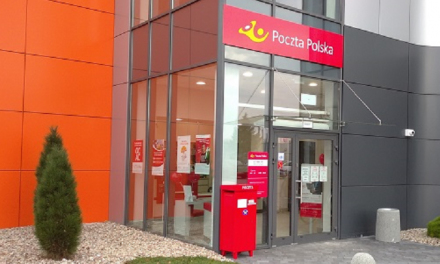
Access all areas
Communications adviser Ruth Snelleman gives Post&Parcel an insight into customer channel access at Australia Post. Australia Post is a large and diverse organisation providing customers with various channels to source its products and services. The challenge it faces is to continue providing access to a range of products and services when the nature of traditional retail and call centre channels is changing and alternative outlets are being developed.
Currently, Australia Post customers can access products and services through postal outlets, call centres and online services.
The retail outlets
One of the key challenges facing Australia Post’s channel strategy is to service rural and remote communities. Australia Post is required to operate 4000 retail outlets nationwide. Of these, 2,500 must service remote and rural areas.
Australia Post’s physical network is currently made up of 827 corporate owned stores, 2,941 licensed post offices, 28 franchises and 637 community outlets.
The type and location of a post office is decided upon by market size, demographics, the level and type of businesses to be serviced, accommodation opportunities and existing outlets in the area.
Franchise Outlets sell Australia Post products and services exclusively. They are usually located in markets with approximately 800 to 1000 customers. Australia Post has the lease for all franchise outlets, pays for their fit out and owns the inventory. Franchises are set for a fixed ten year period. Operators pay a fee for the licence and receive an exit fee when they end the lease.
Licensed Post Offices act as agents for Australia Post products and operate in large and small markets. Approximately half operate in association with another business. There is no fixed period for a licence and outlets are bought and sold on the open market. Licensees are responsible for the premises and own the inventory in the post office. They are independently owned businesses and their retail merchandise range is traded on a wholesale basis. Licensees are only obligated to stock a core product range which is primarily mail service related.
Community Postal Agents are small operations usually located in rural and remote areas. They provide mail delivery services and are also required by Australia Post’s community service obligations to sell stamps and accept mail from people living in rural and remote areas. These facilities are outsourced and operators receive payment based on their volume of activity.
Four category managers are responsible for sourcing the range of products and services offered at Australia Post outlets. The Retail Merchandise group also undertakes inventory planning, space planning and advertising and promotions activities
Australia Post’s Retail Merchandise sells boxes, padded bags, bubble wrap, general merchandise such as CDs and DVDs, books, souvenirs, gift cards, traditional stationery and a small selection of technology products. Retail services such as electronic recharge for mobile and Internet and international phone cards are also sold.
Other channel strategies
Australia Post’s Online Channel is now considered a key channel with an Online Channel Management Team operating as an internal service provider. An Online Strategy for Australia Post has been developed and endorsed, and the auspost.com.au website is being redeveloped.
Australia Post seeks to enhance its online service offering. Channel Access Preferences Market Research was conducted to gain insight into what motivates customers and employees to choose particular channels over others. A Channel Mix analysis was also conducted and specified which channels are currently available for each Australia Post product. The analysis also proposed an ideal strategic channel mix for the product.
Australia Post is also trialing a direct to customer sales model in collaboration with several key suppliers. This new model offers high specification technology products not currently offered in physical outlets and includes computers, computer accessories and software. This new model offers customers the option of placing their order via phone, fax or in store. Products are delivered directly to them.
Challenges and developments
The ability to measure and monitor customer satisfaction and control peaks in demand of customer interest is a key challenge Further, there is a need to maintain the appearance of all outlets and ensure that new Australia Post initiatives, such as Financial and Agency Services Group’s (FASG’s) identity verification services, are promoted within outlets.
Another challenge is that many small to medium sized enterprises do not realise that Australia Post can do much more than “deliver mail”. Currently, Australia Post uses the major marketing website, auspostbusiness.com.au, to communicate with businesses. It was launched with the objective of increasing awareness about the breadth of services Australia Post can provide, such as marketing a business and stocking office supplies. The website was developed as part of a small to medium sized enterprise awareness programme, however it is now accessed by businesses of all sizes.
Australia Post operates a flexible quality staffing model to manage peaks in demand. The number of part time staff has increased to manage the peaks and troughs of customer flows in retail outlets. Over a number of years the labour mix at Australia Post outlets has changed from predominately full time staff to include over 40% part time. Staffing at corporate outlets is optimised by using computer modelling that determines the number and mix of staff required for a particular outlet. This modelling also provides suggested rosters to manage daily and hourly variations in customer visits.
New store layouts and configurations are also being trialled so as to enhance customers’ in store experiences and promote Australia Post’s expansion into identity verification services. A $200m point of sale upgrade has been employed to support future retail product and service offerings. Australia Post does not currently employ self-service units as part of its in store service model. An appointment booking system has been implemented so as to allow customers to book a time for a passport interview via the Internet at any passport outlet in Australia.
Australia Post can provide feedback as to how to measure and monitor customer attitudes and preferences. Research to understand customer needs and usage within specific product categories is regularly conducted together with ongoing market monitoring. Australia Post measures customer satisfaction and brand health through its national research programme. It conducts a quarterly online consumer omnibus that is designed to cater to the diverse needs of multiple stakeholder groups. This has been a cost effective and efficient way of managing multiple research requests from a diverse set of stakeholders and is effective in raising awareness within the organisation about how research can be used.
Conclusions
Faced with the challenge of providing products and services via numerous channels, Australia Post is entering an exciting new phase. It is meeting this challenge by enhancing its online presence, trialling a direct to customer sales model in conjunction with key suppliers, offering flexible staffing models to meet growing demands from customers, servicing regional and remote communities and enhancing the layout and configuration of postal outlets.














